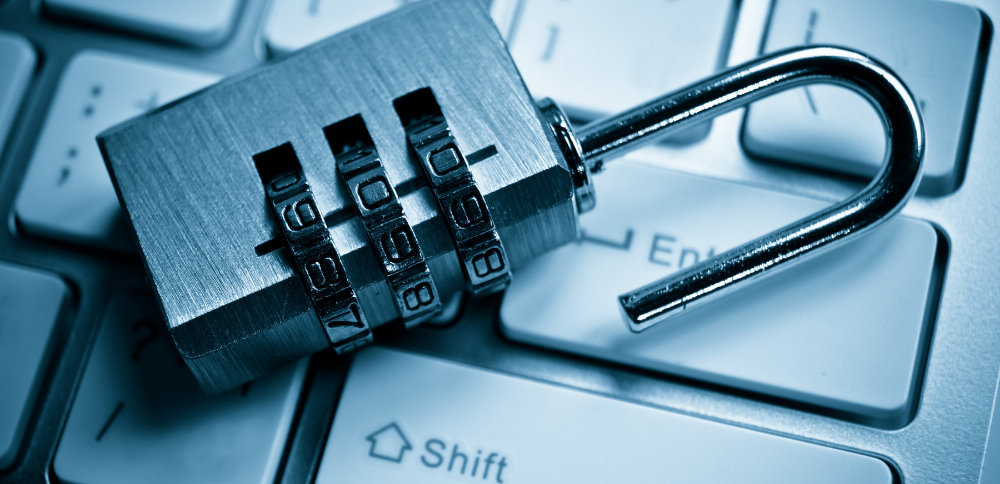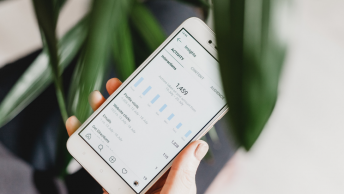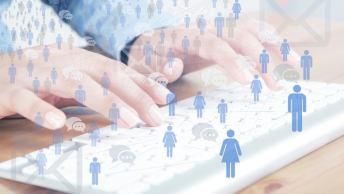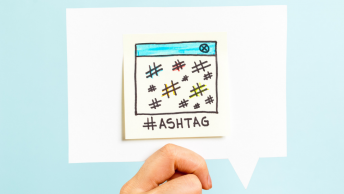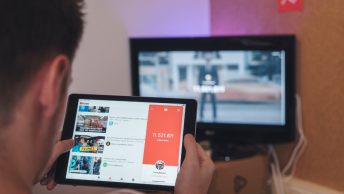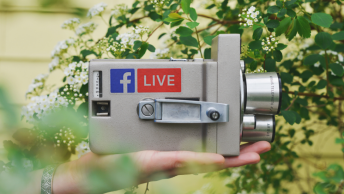Once you create a brand, you should be concerned with how to protect your brand on social media. There are hackers and cybercriminals out there that will do their best to piggyback off your success and steal your customers’ information, consequently killing any positive PR your brand has created.
How to Protect Your Brand on Social Media
You may be wondering why you need to protect your brand on social media when you don’t have to protect your personal accounts. However, your brand has a lot more pressures put on it than your personal account.
Why You Need to Protect Your Brand on Social Media
There has been an increase in security threats on social media year after year. In 2016 alone, scams on social media grew by 150 percent across Twitter, Facebook, and LinkedIn. Additionally, these threats are only expected to grow as we spend more and more time online.
Our need for constant connectivity makes it possible for millions of people to be exposed to security breaches every year. There were 689 million people who experienced cyber crying in 2016, a 10 percent increase from the year before.
Most of these cyber attacks and hackers gain access because of human error within an organization. Consequently, a lack of education regarding social media threats leave them exposed and ready to be targeted.
The biggest risks of not being secure on social media are:
- Eroded brand trust: 36 percent of people in a study by FireEye Inc said that their perception of a brand diminished after a security incident, while one third said it caused them to feel negatively about a brand.
- Revenue Damage: IT breaches and crisis communications lead to billions of dollars spent each year.
- Decreased ROI: Any brand-damaging events you have on social media will begin to destroy the investment your brand has made while you spend money on damage control
If you haven’t implemented any processes to make sure your brand is protected, then you’re opening yourself up to social media risks and threats.
Sadly, the biggest risk you can take is doing nothing at all.
Six Social Media Threats and Risks
There are hundreds of risks on social media for your brand, but these are the six main categories to be aware of.
1. Account Neglect
If you aren’t actively monitoring and responding to conversations on your social media accounts, then you’re experiencing account neglect. This leaves your brand vulnerable to customer complaints and product issues which can quickly damage your brand.
Whether or not you choose to be active, people will still be engaging with your brand. 82 percent of customers say that they expect a fast response for a positive brand experience.
2. Human Error
Unfortunately, people are usually responsible for any security processes breaking down. Something as simple as uploading the wrong image for a social media post or accidentally sharing private data are typical human errors.
Human error is the threat with the highest economic impact. If you haven’t put tools and processes in place to catch these errors, then you’re setting yourself up for disastrous consequences for your brand.
3. Compliance Violation
This is when you break the rules that were laid out by your company or regulatory body. There are over 12 regulatory bodies (FINRA, FTC, FDA, SEC, etc.) that have defined rules regarding what businesses can do on social media.
Regulators recognize social media as a public communication channel subject to existing earnings disclosure, truth in advertising, and data privacy regulations. These requirements are designed to protect consumers from being misled or defrauded.
Your brand needs to understand these policies and have an approval policy in place. This will consequently make sure that you’re not left open to hefty fines and lengthy investigations.
4. Phishing

The number of phishing ploys on social media has risen by 150 percent in the last year. This happens as cybercriminals attempt to steal sensitive information from unprotected individuals.
A common phishing scam on social media is a fake customer service account which will be posted as a reply to your customer’s tweets or posts about your brand. This imposter account will then give your customers a link to click and enter their personal information into.
5. Account Hacks
This happens when cybercriminals take over your social media accounts. They then typically send out nasty or inappropriate messages to your followers.
This can be an expensive PR nightmare. Customer responses are swift and severe and can cost millions in damages.
Unfortunately, account hacks are all too common, with big brands being hacked every day.
6. Malware
Malware (malicious software) gains access to your computer systems and data through code. This can end up being a temporary or permanent loss of your brand’s data.
Ransomware, where they use malware to lock or encrypt your computer data, will prevent your entry until you pay a ransom demanded by the criminal. This is becoming increasingly more common.
How to Protect Your Brand on Social Media
These six strategies will help you to reduce the risk of human error and allow you to identify any issues before they become a problem.
1. Identify and Remove Neglected Social Media Accounts
You need to identify and shut down accounts that don’t add value to your business. This is so that you can ensure you have a consistent brand voice in all your social media channels.
By doing a basic inventory, you can identify and deal with any rogue accounts, remove inactive and low-value accounts, and invest in more high-quality ones.
2. Update Your Password Policy
Having a strong password policy will make it harder for people to be able to get into your company’s accounts, and consequently impersonate your brand.
Your password policy should have the minimum requirements:
- Complex Passwords: They should be between 8 and 20 characters with an uppercase, lowercase, and special characters
- Two-Factor Authentication: An example of this is signing in with your password and entering a code sent to your mobile phone
- Single Sign-On: Reduce the number of passwords you have floating around by signing into multiple systems with the same set of credentials
Your passwords should also be updated regularly and with limited access to make sure your passwords remain confidential.
3. Create a Social Media Policy
Your social media policy will establish a set of process and protocols for your brand channels. This will make all of your employees accountable for protecting your brand.
An effective policy usually has:
- Brand guidelines and practices
- Examples of appropriate behavior
- Consequences of social media misuse
- Roles and responsibilities for social media
Additionally, you should update your policy regularly to accurately reflect your company’s changing habits.
4. Train Your Employees
Your employees should all have a basic social media awareness training because of the new reality of bringing your own device to work.
Successful employee training should include:
- An overview of your brand’s social media policy
- Appropriate use of social media networks
- Common risks involved with using social media
- How to comply with brand guidelines
5. Have a Hierarchy For Social Media Outreach
Your brand’s social media accounts should be protected by an approval system to make sure that nothing goes onto your social media account without the right approval. This will consequently reduce your risk of human error.
6. Use Social Listening
Social listening is how you can listen in to unfiltered conversations that are happening on social media regarding your brand. This will be an important aspect of protecting your brand on social media.
Social listening will give you the opportunity address any complaints, spammy messages, or negative brand sentiment before they grow.
Managing a Social Media Crisis
If you’re prepared to handle a social media crisis correctly with a crisis management plan, you’ll be significantly able to reduce its negative impact on your brand.
1. Social Monitoring Protocol
If you’re constantly monitoring for negative mentions of your brand, you will have the opportunity to address any issues as they come up. This will kill most of your complaints before they create a crisis.
Additionally, you should include what’s being monitored, who’s monitoring, and instructions on how to deal with any issues.
2. Roles and Responsibilities
Have a list of your key decision makers and their roles and responsibilities ready so that you can move quickly when a crisis happens. These are the people who are authorized to communicate on behalf of your brand.
3. Potential Scenarios
When educating your employees on what to do in a crisis include examples using your crisis management plan. Additionally, these training sessions will help your employees to understand the risks and how they should respond.
4. Preapproved Messaging
Your social media and PR teams should develop a series of pre-approved messages that you can use in each scenario we’ve outlined. This document should be available for your social media team to use.
This plan will allow you to act quickly, be transparent, communicate quickly, and build trust. You should also review and revise your plan after any crisis.
Prepare for the Future
https://youtu.be/tcOAcmY1utU
Investing in a secure future for your organization by making brand protection a priority for all of your social accounts, you can stop harmful behavior, stop disasters early, and minimize the cost of brand incidents.
Hootsuite is also a great option that can allow you to safely engage your audience in all your social networks while being protected against hackers.
Final Thoughts
You’ve worked hard to create your brand. You should work equally as hard to make sure that it maintains the reputation that you’ve built for it. By having your team all on the same page regarding your crisis management program, you’ll be setting your brand up for success if any trouble does come up. Consequently, any bad press you get will be able to be minimized quickly. It is this quick action that will be able to save your brand from the damage hackers can cause you.
Do you have a crisis management plan in place?


